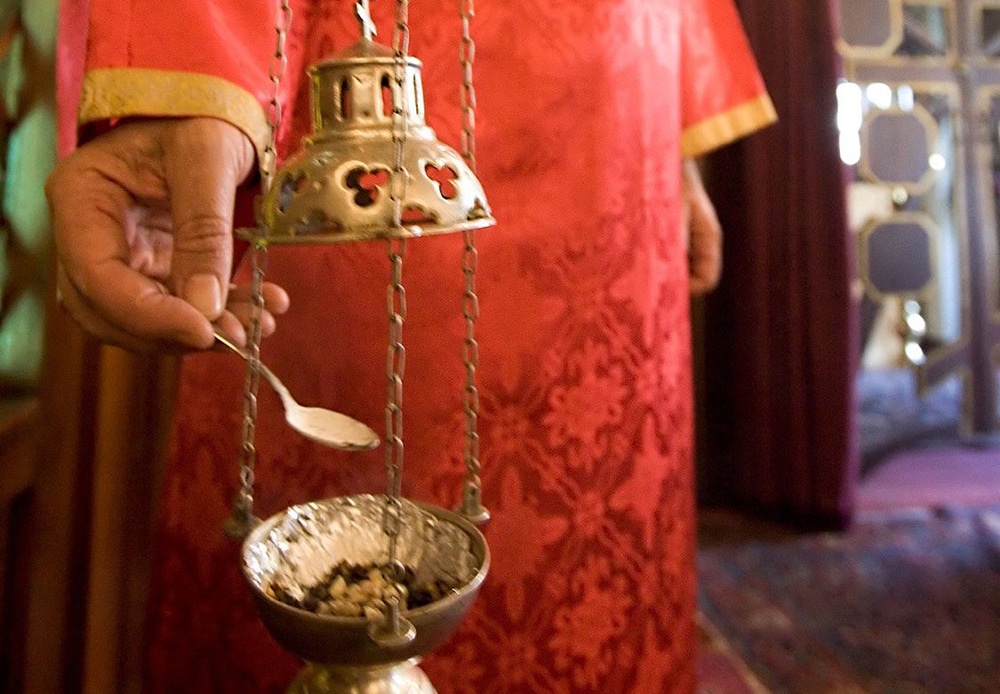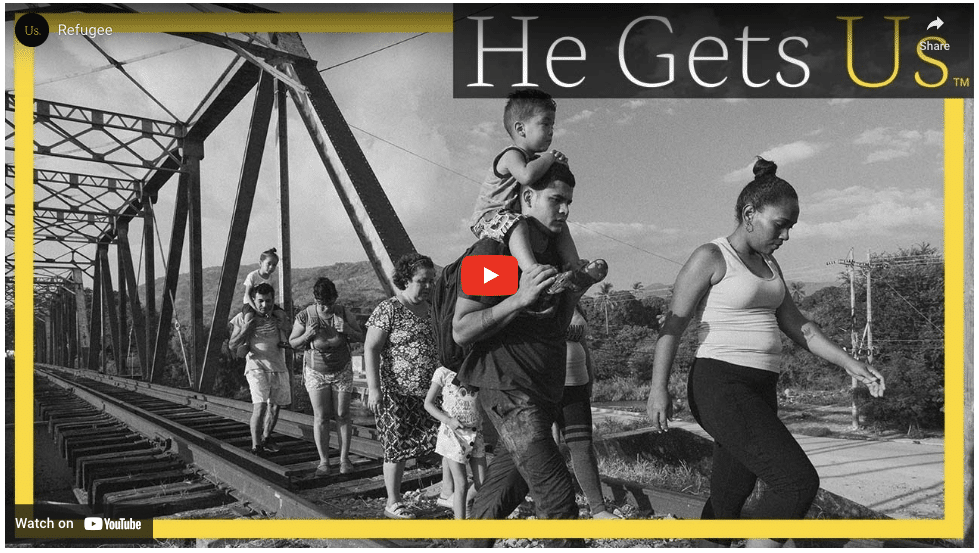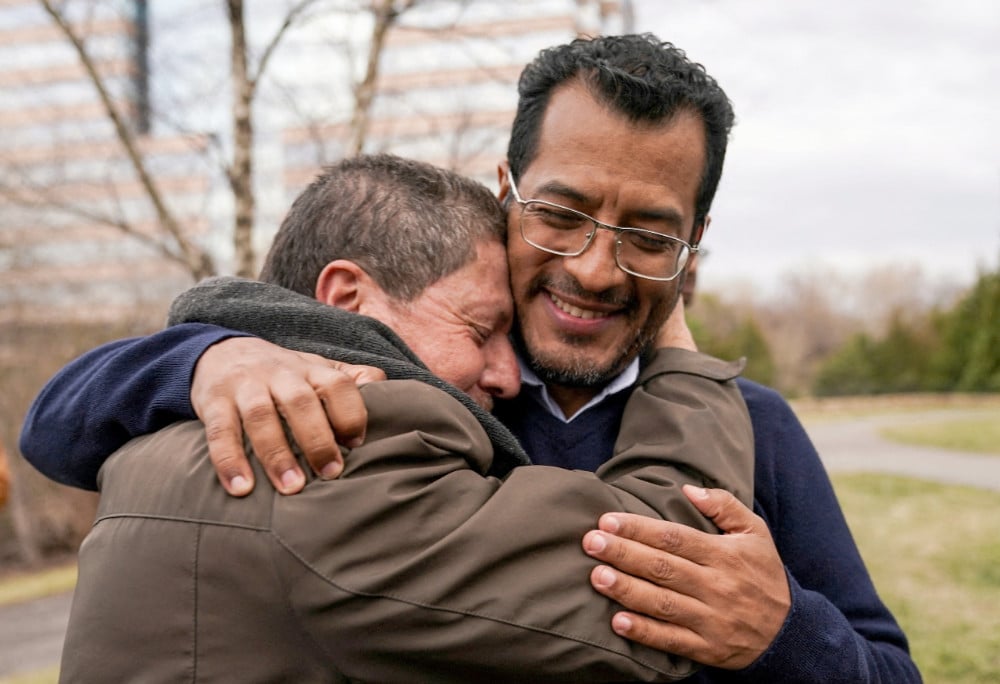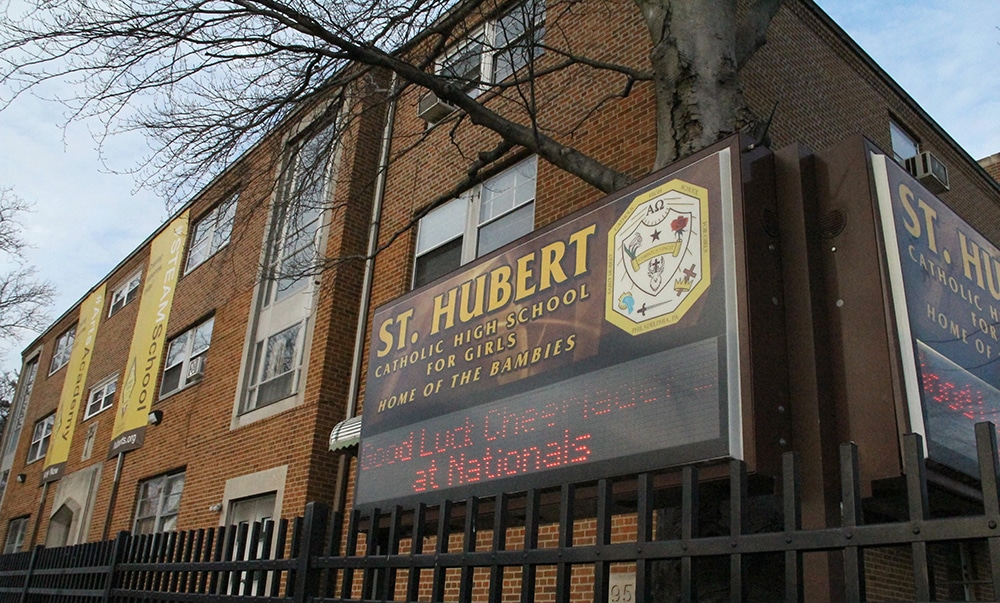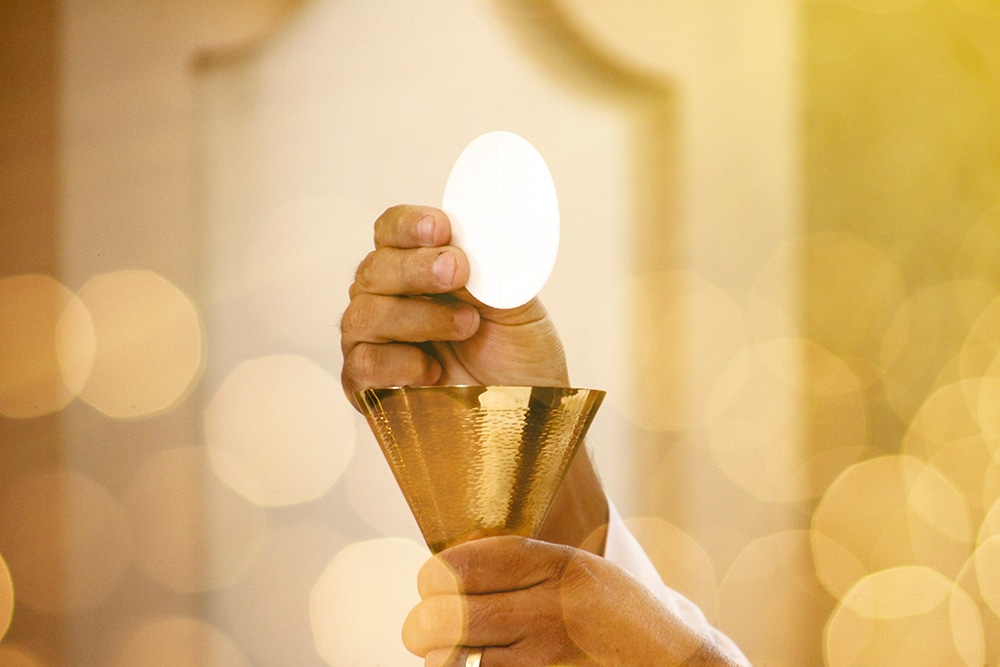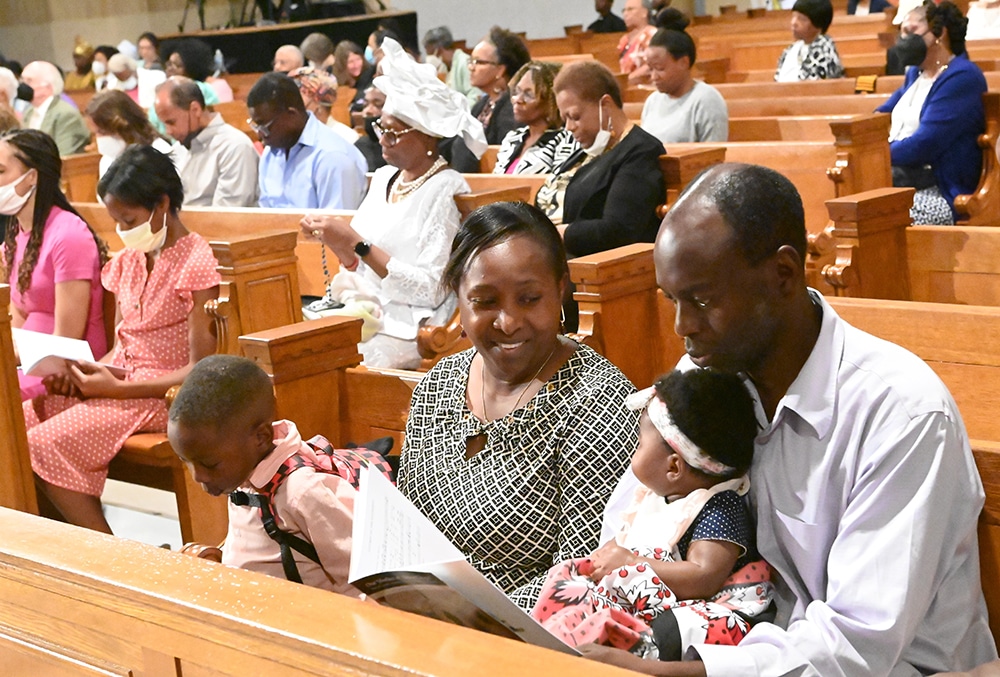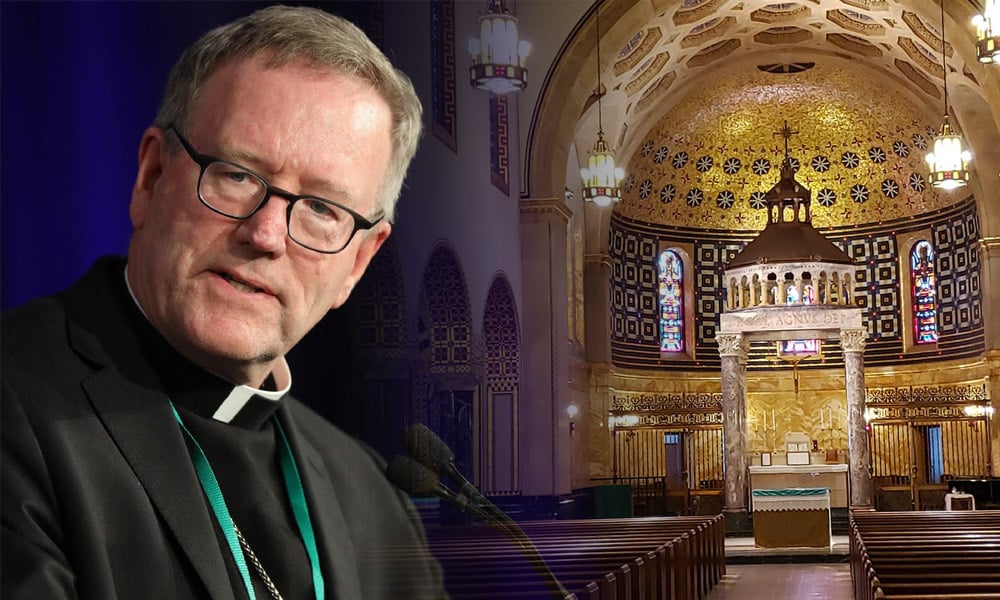(OSV News) — Byzantine Rite Catholics have been preparing for Great Lent since January this year. The Sunday of Zacchaeus, which this year fell on Jan. 22 (or Jan. 29 for some parishes), is the first of the five Sundays of pre-Lenten Preparation, culminating with Forgiveness Sunday, also known as Cheesefare Sunday, which this year is Feb. 19 (or Feb 26).
“Lent is preparation for Pascha. But these Sundays are also preparation for Lent,” said Father Pavlo Popov, pastor of St. Sophia’s Ukrainian Catholic Parish in The Colony, Texas, a Dallas suburb. “We prepare for preparation.”
The Eastern Catholic Churches include five ritual families, or groups. One is the Byzantine Rite, which itself is made up of more than a dozen churches — including Ukrainian, Melkite and Ruthenian.
To begin the Lenten season, many parishes of the Byzantine Rite on Forgiveness Sunday will celebrate a service called Forgiveness Vespers, which concludes with the Ceremony of Mutual Forgiveness. According to Father Popov, the spiritual preparation leading up to Great Lent “all culminates on that Sunday; it makes perfect sense, so you start Lent with a pure soul, a clean soul.”
During the Ceremony of Mutual Forgiveness, clergy and parishioners ask each other for forgiveness, and assure each other that forgiveness comes from God. This ceremony marks the beginning of Great Lent for Byzantine Rite Catholics.
“During Lent, you have a clear vision, basically what you should continue working on,” he told OSV News. “Your eyes are very clear. During Lent, you’re not thinking or looking for what to do. You already know. It’s there. You just work on what you’ve already been preparing. Desire, humility, repentance, forgiveness, thinking about … the mystery of facing God face to face.”
Father Popov said it may be too soon to ask members of his congregation to think of Forgiveness Vespers in terms of the war in Ukraine. While St. Sophia’s Parish includes many non-Ukrainians, there also are many members of the parish who are Ukrainian immigrants themselves. “While things are happening, people aren’t thinking forgiving yet because the only thought that occupies them is how to survive.” He added, “There is still probably right now at this moment five, 10 wars going on in the world. There is still Syria, there is still Middle East, there is still Africa.”
While Father Popov asserted that “the war will end someday,” he also acknowledged that forgiveness “is a process.” He encourages parishioners to think of Forgiveness Vespers at the parish level this year, focusing on individual relationships, saying, “Forgive me, brother, for I have done wrong against you, or forgive, my sister, for all the neglect, all the wrongs I’ve done to you.”
Many parishioners of St. Sophia’s Parish drive long distances to attend services. “As a married priest with kids,” said Father Popov, “I realize what it is for parents to come to church twice in the same day.” St. Sophia’s Parish celebrates an abbreviated form of Forgiveness Vespers at the end of Sunday Divine Liturgy. (In the Eastern Catholic Churches, a married priest is one who married before diaconate ordination.)
St. Basil the Great Byzantine Catholic Parish in Irving, Texas, celebrates Forgiveness Vespers in the early afternoon. As a cantor at St. Basil’s, Elizabeth Freiberg is very familiar with the melodies used at Ruthenian parishes. “We have this standard chant tone that we use throughout the year and it’s based on the major key,” explained Freiberg. “In the middle of (Forgiveness Vespers), the responses suddenly take on a minor key tone … you feel it.” This key, or “tone” change, starts with the Evening Prokeimenon. Freiberg sang the first few lines: “Hide not your face from your servant for I am in distress. Answer quickly; come close to my soul and redeem me.”
For Freiberg, this haunting melody marks the true beginning of Great Lent. “You realize that oh, this is for real, all of this prep that we’ve been doing.”
Forgiveness Vespers also includes the prayer of St. Simeon (based on Luke 2:29-32) and the Lenten prayer of St. Ephrem, accompanied by several prostrations: “Lord and Master of my life, spare me from the spirit of indifference, despair, lust for power and idle chatter. Instead, bestow on me, your servant, the spirit of integrity, humility, patience and love. Yes, O Lord and King, let me see my own sins and not judge my brothers and sisters; for You are blessed forever and ever, Amen.”
After the final Amen of Vespers — or, if Forgiveness Vespers is being celebrated in its condensed form, after the final Amen of the Divine Liturgy, the parish celebrates the Ceremony of Mutual Forgiveness.
Father John Mefrige explained how he initiates the Ceremony of Mutual Forgiveness at Three Holy Hierarchs Melkite Parish in San Antonio, saying to his congregation: “As we begin our journey to Pascha we have to recognize that there are often obstacles toward receiving God’s grace and for preparing to receive God’s grace, and one of the obstacles is unforgiveness. And so I want to ask of you, my community, forgiveness for everything I have done or anything that I have failed to do as your pastor.” Then Father Mefrige makes a prostration, saying, “God, forgive me, a sinner.”
A parishioner approaches Father Mefrige and says, “God forgives you, and I forgive you, Father.” The parishioner and Father Mefrige exchange the “kiss of peace,” an embrace and kiss on each shoulder. “And that person will stand next to me,” said Father Mefrige. “And the next person comes up to me and we repeat the same exchange and then they go to the next person and they have the next exchange as well. And we continue until the whole church is surrounded by people.”
Nicholas and Rebecca Mataya, parishioners of Three Holy Hierarchs Parish and members of the Austin Ukrainian Catholic Community, emphasized the importance of the ceremony of mutual forgiveness to begin the Lenten season. Their daughter Teresa has 22q11.2 deletion syndrome and is immunocompromised — so for the past few years, before Teresa was able to receive the COVID-19 vaccine, they celebrated the Ceremony of Mutual Forgiveness at home with her. “How many times you’ve accidentally hurt someone without realizing it, and so being able to ask forgiveness and receive forgiveness for those times,” Rebecca Mataya told OSV News. “That seems like such a great way to start Lent.”
For Nicholas Mataya, the Ceremony of Mutual Forgiveness is “not just laying the foundation for what we’re about to embark on with the fast, but is also a bit of community building and rebuilding. … Just like every other parish on earth, we’ve had politics get in the way between parishioners and all sorts of things, so being able to say, ‘Forgive me’ and ‘God forgives’ is really important.”
Father Mefridge referred to the prayer of St. Ephrem and the Ceremony of Mutual Forgiveness as “a launching pad” for Great Lent. For Byzantine Rite Catholics, Forgiveness Vespers is a culmination, a crescendo — in a minor key — leading to the Lenten spiritual journey and, ultimately, to the celebration of the Lord’s resurrection at Pascha.
Kiki Hayden writes for OSV News from Texas.

